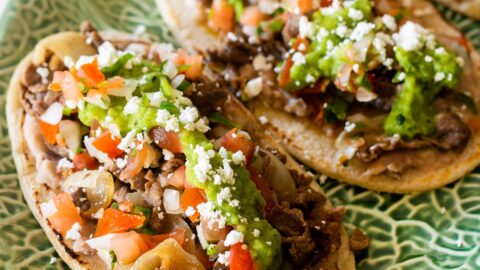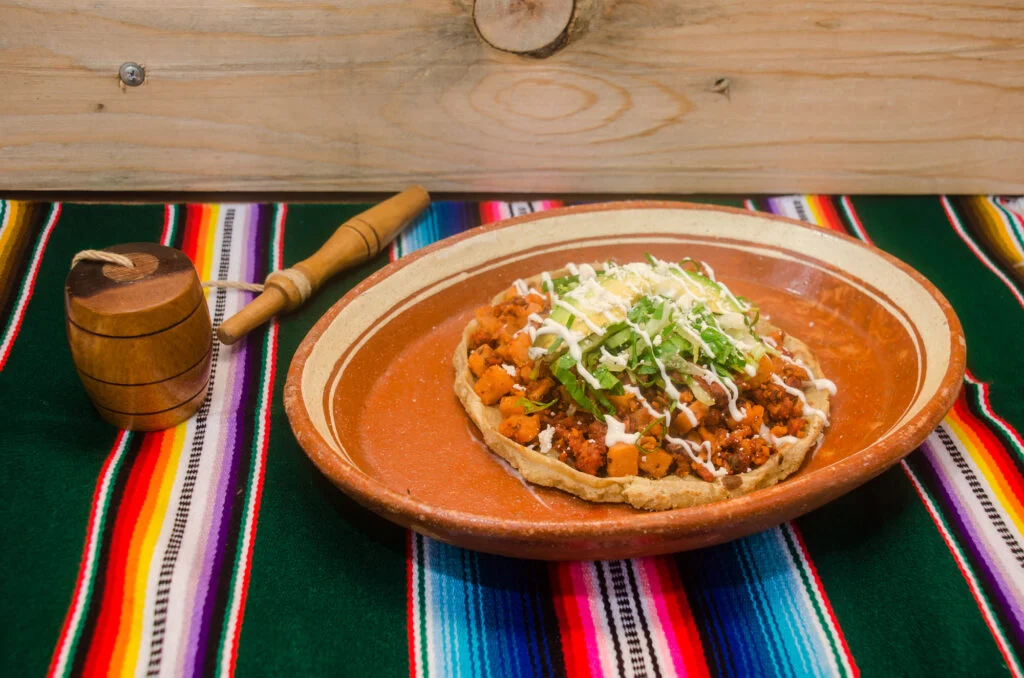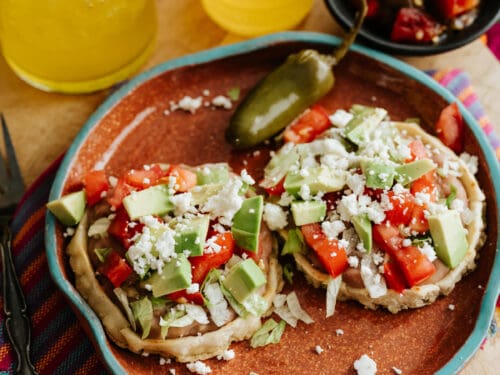Have you ever wondered about the subtle yet distinct differences between huaraches and sopes?
These two traditional Mexican dishes share similarities in their base ingredients and preparation methods, yet they diverge in their presentation and texture.
Huaraches are named after the sandals they resemble, featuring an elongated, oval-shaped masa base topped with various ingredients like beans, meats, and salsa.
In contrast, sopes are smaller, thicker rounds of masa dough with pinched edges, fried to create a crispy base before being topped with refried beans, meats, lettuce, and cheese.
Understanding these nuances helps appreciate the rich culinary diversity of Mexican cuisine.
Difference between huaraches and sopes?
What is huaraches?
Huaraches are a traditional Mexican dish named after the sandal they resemble in shape.
They consist of a thick, oval-shaped masa dough base that is handmade and cooked on a griddle until crispy on the outside and soft inside. The base is typically topped with refried beans and layered with various ingredients such as meats (like shredded chicken or beef), lettuce, tomatoes, onions, crumbled cheese, and salsa.
This combination of savory toppings and textures makes huaraches a hearty and flavorful meal.
They are popular across Mexico and are enjoyed for their rich taste and satisfying composition, often served as street food or in traditional Mexican restaurants.
What is sopes?
opes are a traditional Mexican dish that consists of a thick, small round base of masa dough, similar to a tortilla but thicker, which is pinched at the edges to create a raised rim.
This base is fried until crisp on the outside while maintaining a tender interior. Sopes are distinguished by their concave shape, which forms a shallow bowl-like structure, ideal for holding a variety of toppings.
Typically, sopes are topped with refried beans as a base, followed by a range of toppings such as shredded meats (like chicken or pork), diced onions, cilantro, crumbled cheese (like queso fresco), sour cream, and salsa.
The combination of textures—from the crispy base to the savory toppings—creates a satisfying eating experience. Sopes are enjoyed throughout Mexico and are appreciated for their versatility, allowing for different combinations of flavors and ingredients based on regional and personal preferences.
They are commonly served as appetizers, snacks, or as part of a larger meal.
What is the test of huaraches?
The taste of huaraches is a delightful blend of savory, crispy, and hearty flavors. The thick masa dough base, which is fried until crispy on the outside and remains soft inside, provides a substantial and satisfying texture.
The base itself has a subtle corn flavor that complements the toppings added to it.

Typically, huaraches are topped with refried beans that add creaminess and depth, along with shredded meats such as chicken or beef, which contribute savory notes.
Fresh toppings like lettuce, tomatoes, and onions add a crisp and refreshing element, while crumbled cheese (such as queso fresco) provides a creamy and slightly salty contrast. Salsas, ranging from mild to spicy, enhance the overall flavor profile with their tanginess and heat.
Overall, the taste of huaraches is rich, balanced, and packed with layers of flavors and textures, making it a popular choice among both locals and tourists in Mexico.
What is the test of sopes?
The taste of sopes is characterized by a harmonious blend of textures and flavors that make each bite satisfying and flavorful. The masa dough base, fried to a crispy exterior while maintaining a soft interior, provides a sturdy foundation with a distinct corn flavor that complements the toppings.
Sopes are typically topped with refried beans, which add a creamy richness, and a variety of ingredients such as shredded meats (like chicken or pork) that contribute savory depth.
Here, what are huaraches?
Fresh toppings like diced onions, chopped cilantro, and sliced tomatoes provide a crunchy and vibrant contrast. Crumbled cheese, often queso fresco, adds a creamy and slightly salty element that enhances the overall taste profile.
Additionally, sopes are often served with salsa, which can range from mild to spicy, adding tanginess and heat to each bite.
The combination of these elements creates a flavorful and satisfying dish that is enjoyed across Mexico for its versatility and deliciousness.
Basic difference between huaraches and sopes
How much time it take to make huaraches?
The time it takes to make huaraches can vary depending on the specific recipe and preparation method. Generally, preparing huaraches involves several steps.
First, masa dough is prepared by mixing masa harina (corn flour), water, and sometimes a bit of salt or fat like lard.
The dough is then kneaded until smooth and divided into portions, each shaped into an oval or elongated form resembling a sandal sole.
Here, what is the difference between huaraches and tlacoyos?
Next, these dough portions are flattened and shaped further to create the characteristic oval huarache base. They are then cooked on a hot griddle or fried until they achieve a crispy exterior and a soft interior.
This cooking process typically takes a few minutes per huarache, with attention needed to ensure even cooking and desired texture.
Once cooked, huaraches are topped with various ingredients like refried beans, meats, salsa, onions, and cheese.
Overall, from preparation to cooking and topping, making huaraches can take approximately 30 to 45 minutes depending on experience and the number being prepared.
How much time it takes to make sopes?
Making sopes involves several steps that collectively take about 45 minutes to an hour, depending on the recipe and cooking method.
The process begins by preparing the masa dough, which is made from masa harina (corn flour), water, and sometimes a bit of fat like lard.

The dough is kneaded until smooth and then divided into small portions, each shaped into round discs with raised edges.
These masa discs are cooked on a hot griddle until they develop a crispy exterior while remaining soft and pliable inside. This cooking process usually takes a few minutes per sope, and attention is needed to ensure even cooking and texture.
Once cooked, sopes are topped with a variety of ingredients such as refried beans, shredded meats, lettuce, salsa, cheese, and sour cream. The toppings are added just before serving, allowing for customization based on personal taste preferences.
Overall, the preparation and cooking of sopes can take between 45 minutes to an hour, including both dough preparation and cooking time.
How to make a huaraches?
How to make a sopes?
Related faq’s
What food is similar to huaraches?
Conclusion:
In conclusion, while huaraches and sopes share a foundation of masa dough and a tradition of delicious toppings, their distinct shapes and textures set them apart.
Huaraches are characterized by their large, oval-shaped bases resembling sandals, with a thinner and elongated form that provides a crispy yet tender bite.
In contrast, sopes are smaller, thicker discs with raised edges, creating a sturdy base that crisps on the outside while remaining soft inside.
These differences not only influence their appearance but also impact how toppings are enjoyed, making each dish a unique culinary experience within Mexican cuisine.

